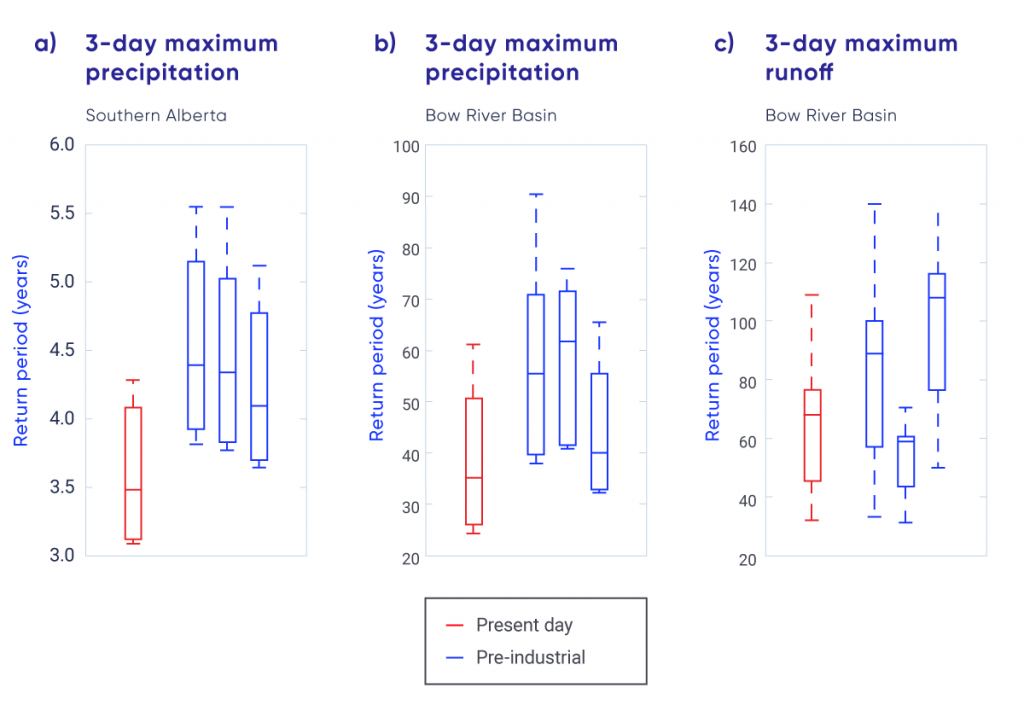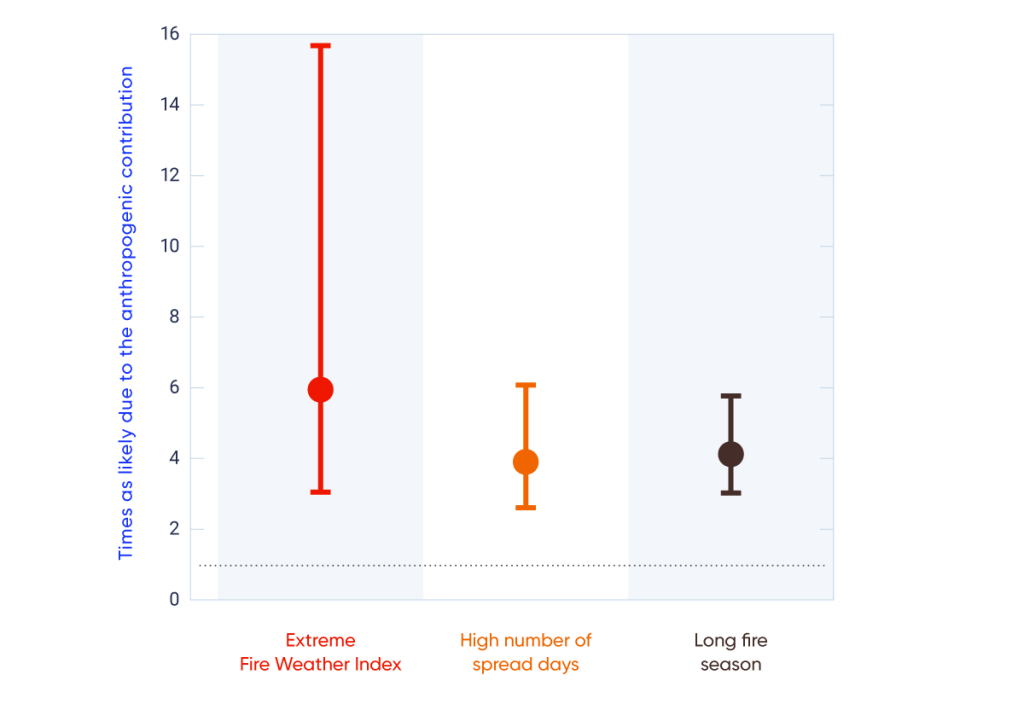Chapter Key Messages
Temperature
It is virtually certain that Canada’s climate has warmed and that it will warm further in the future. Both the observed and projected increases in mean temperature in Canada are about twice the corresponding increases in the global mean temperature, regardless of emission scenario.
Annual and seasonal mean temperatures across Canada have increased, with the greatest warming occurring in winter. Between 1948 and 2016, the best estimate of mean annual temperature increase is 1.7°C for Canada as a whole and 2.3°C for northern Canada.
While both human activities and natural variations in the climate have contributed to the observed warming in Canada, the human factor is dominant. It is likely1 that more than half of the observed warming in Canada is due to the influence of human activities.
Annual and seasonal mean temperature is projected to increase everywhere, with much larger changes in northern Canada in winter. Averaged over the country, warming projected in a low emission scenario is about 2°C higher than the 1986–2005 reference period, remaining relatively steady after 2050, whereas in a high emission scenario, temperature increases will continue, reaching more than 6°C by the late 21st century.
Future warming will be accompanied by a longer growing season, fewer heating degree days, and more cooling degree days.
Extreme temperature changes, both in observations and future projections, are consistent with warming. Extreme warm temperatures have become hotter, while extreme cold temperatures have become less cold. Such changes are projected to continue in the future, with the magnitude of change proportional to the magnitude of mean temperature change.
Precipitation
There is medium confidence that annual mean precipitation has increased, on average, in Canada, with larger percentage increases in northern Canada. Such increases are consistent with model simulations of anthropogenic climate change.
Annual and winter precipitation is projected to increase everywhere in Canada over the 21st century, with larger percentage changes in northern Canada. Summer precipitation is projected to decrease over southern Canada under a high emission scenario toward the end of the 21st century, but only small changes are projected under a low emission scenario.
For Canada as a whole, observational evidence of changes in extreme precipitation amounts, accumulated over periods of a day or less, is lacking. However, in the future, daily extreme precipitation is projected to increase (high confidence).
Attribution of Extreme Events
Anthropogenic climate change has increased the likelihood of some types of extreme events, such as the 2016 Fort McMurray wildfire (medium confidence) and the extreme precipitation that produced the 2013 southern Alberta flood (low confidence).
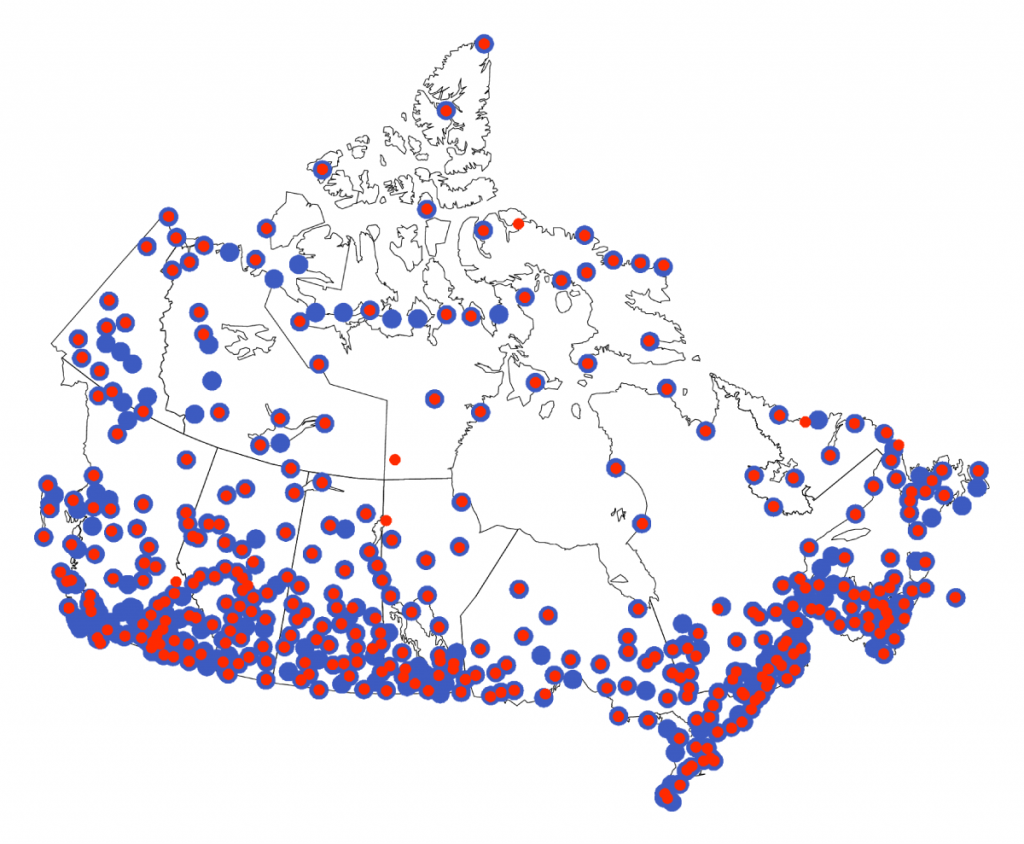
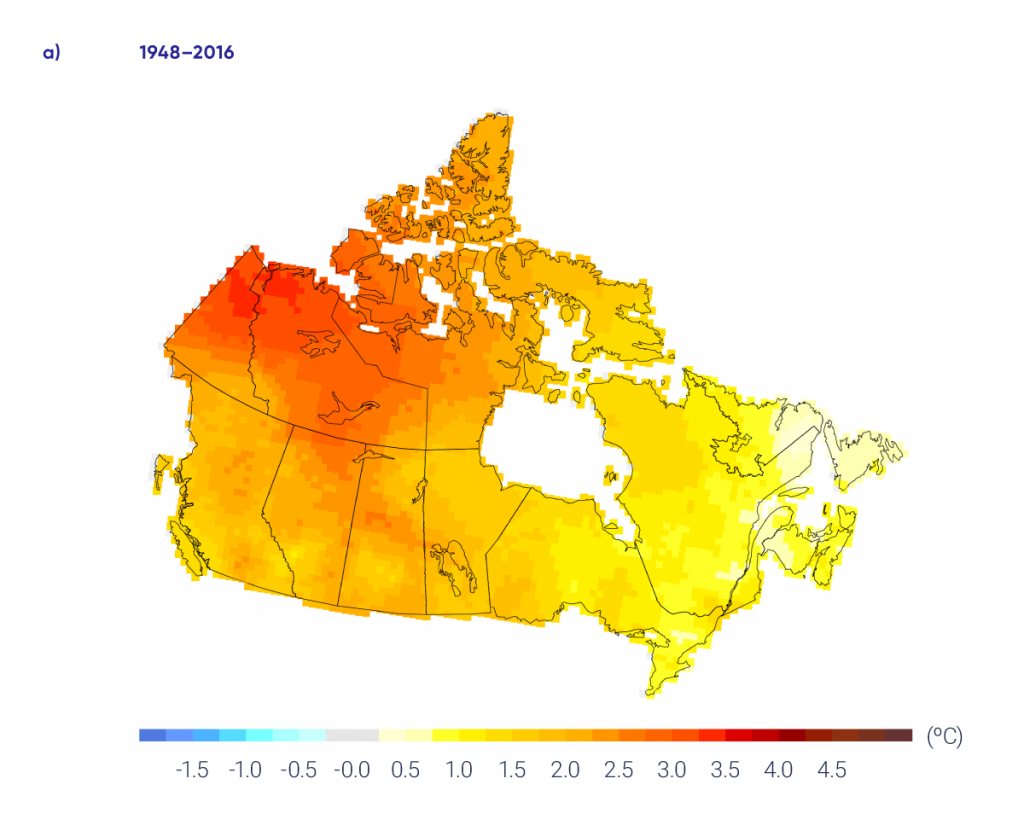

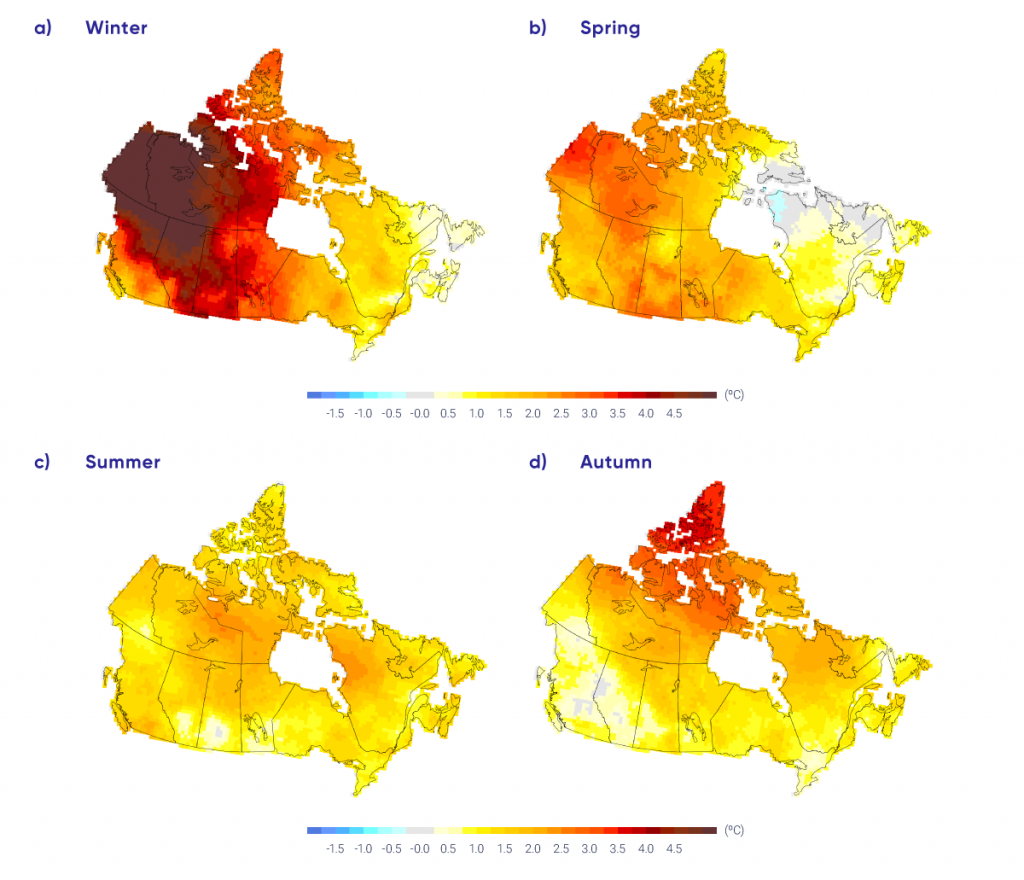
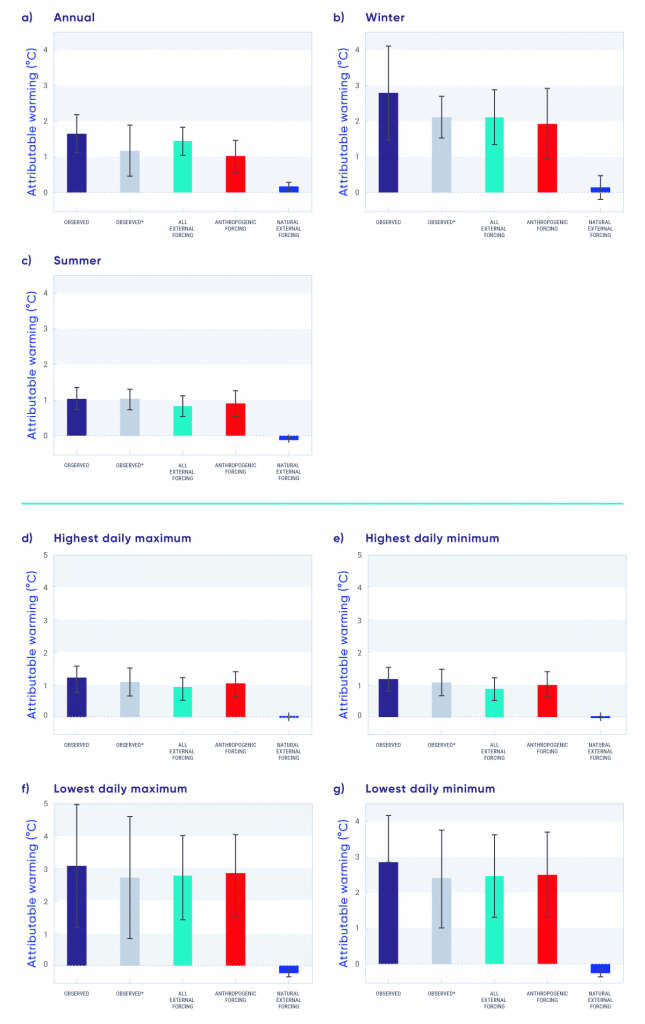
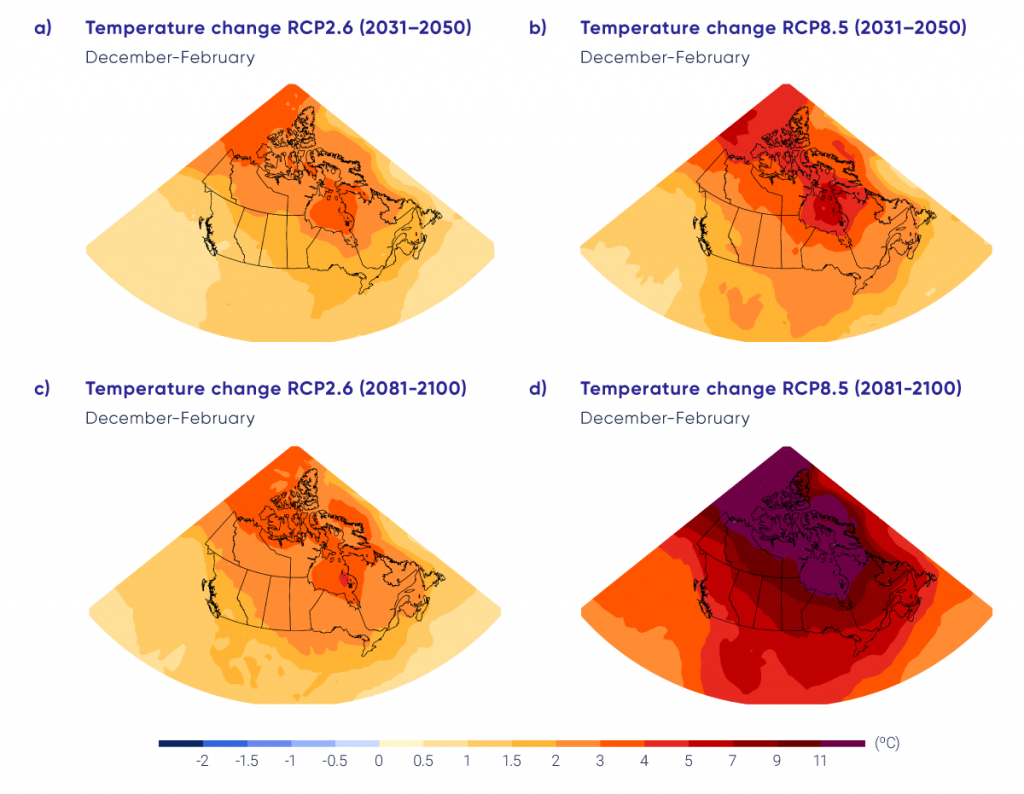
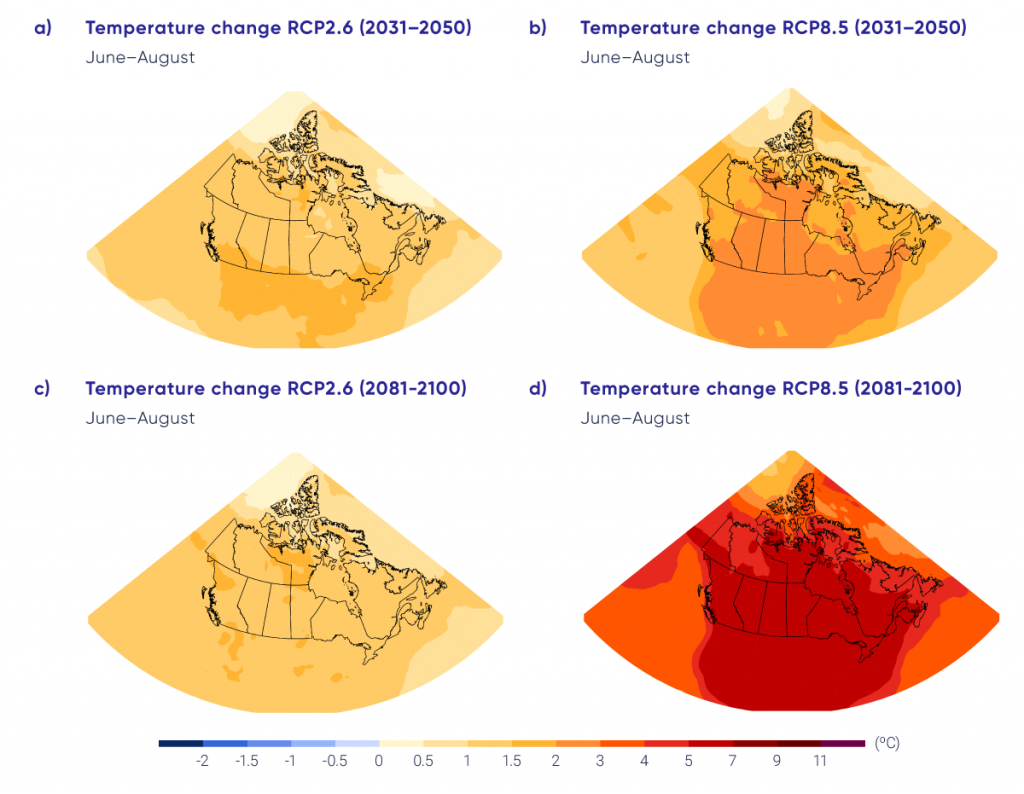


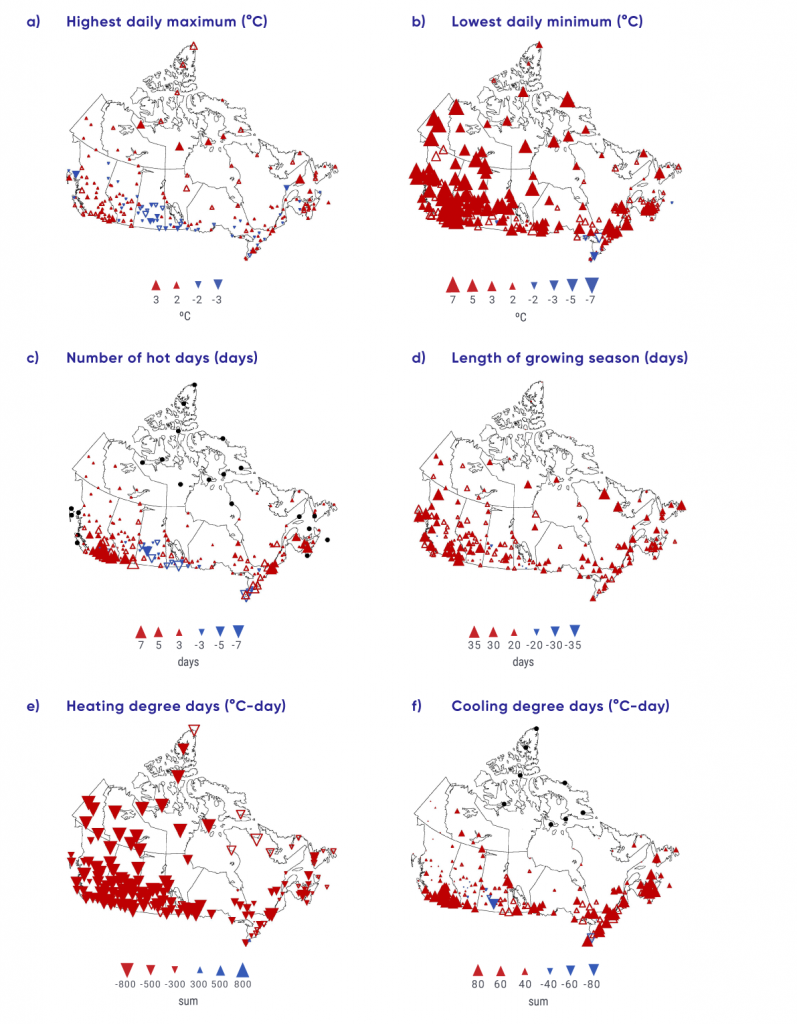
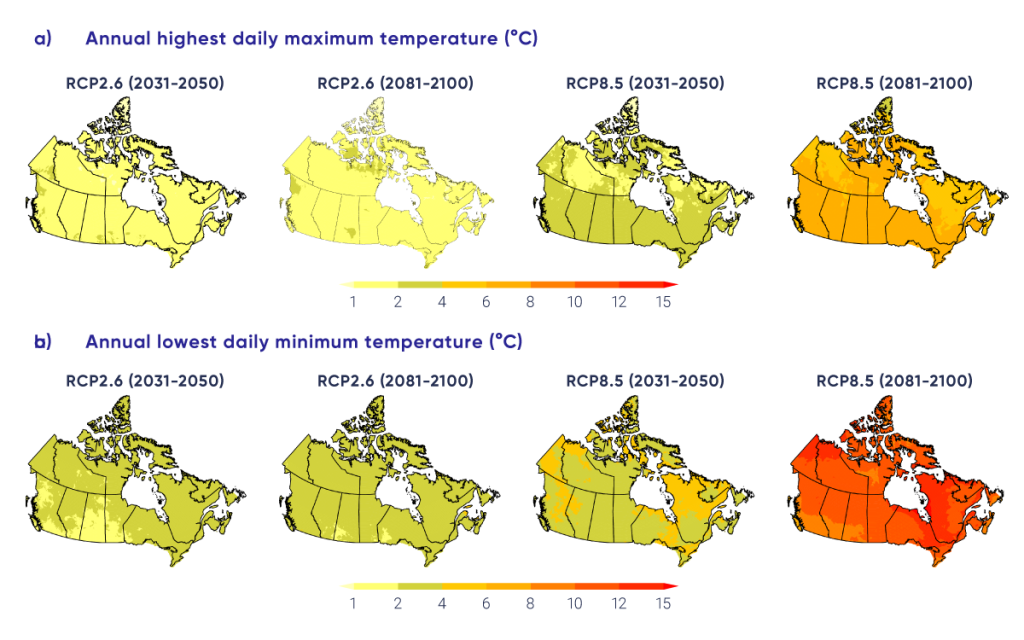
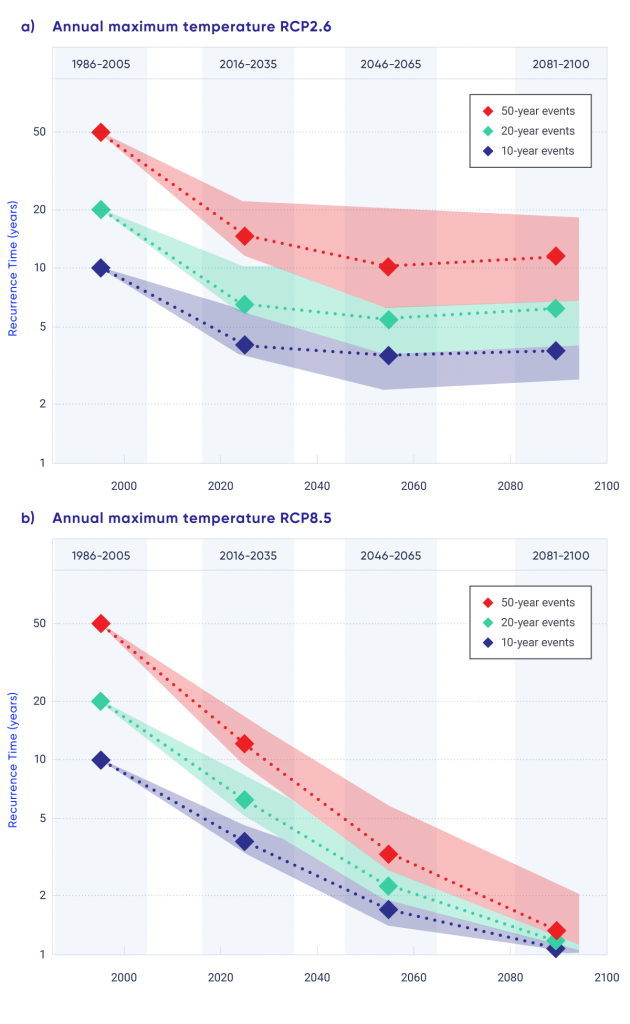
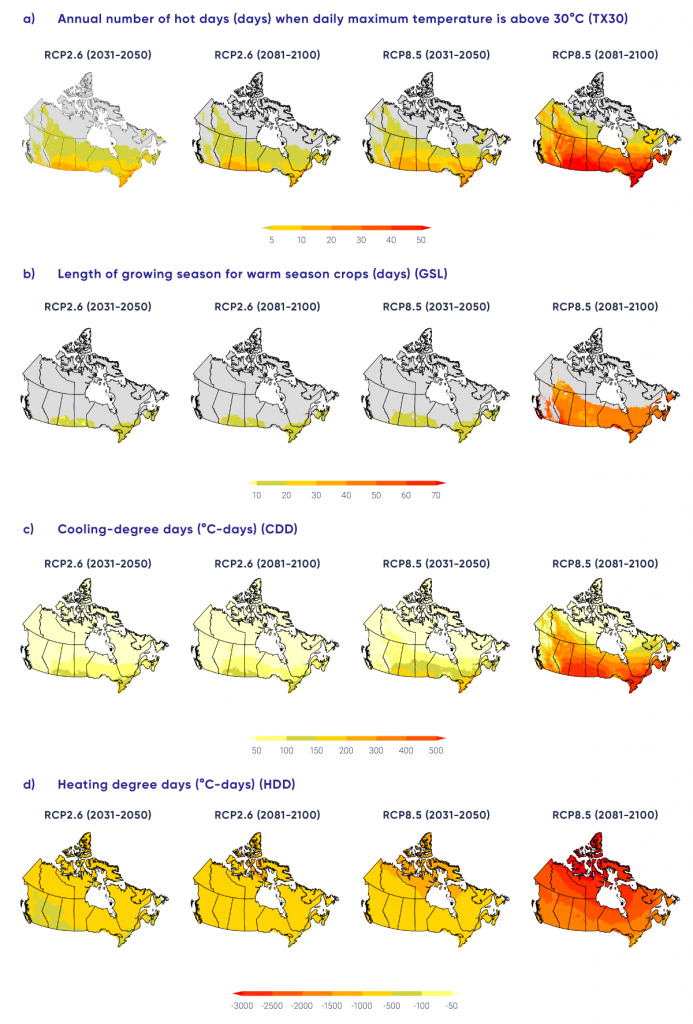
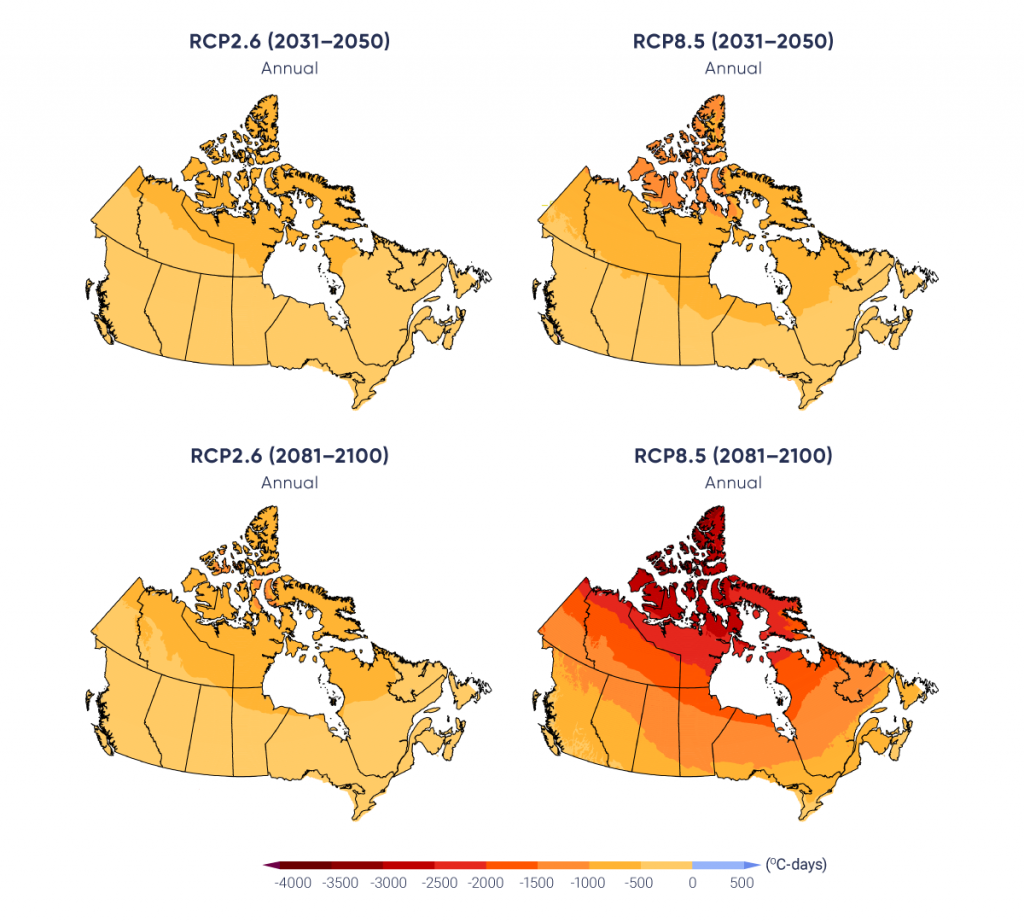
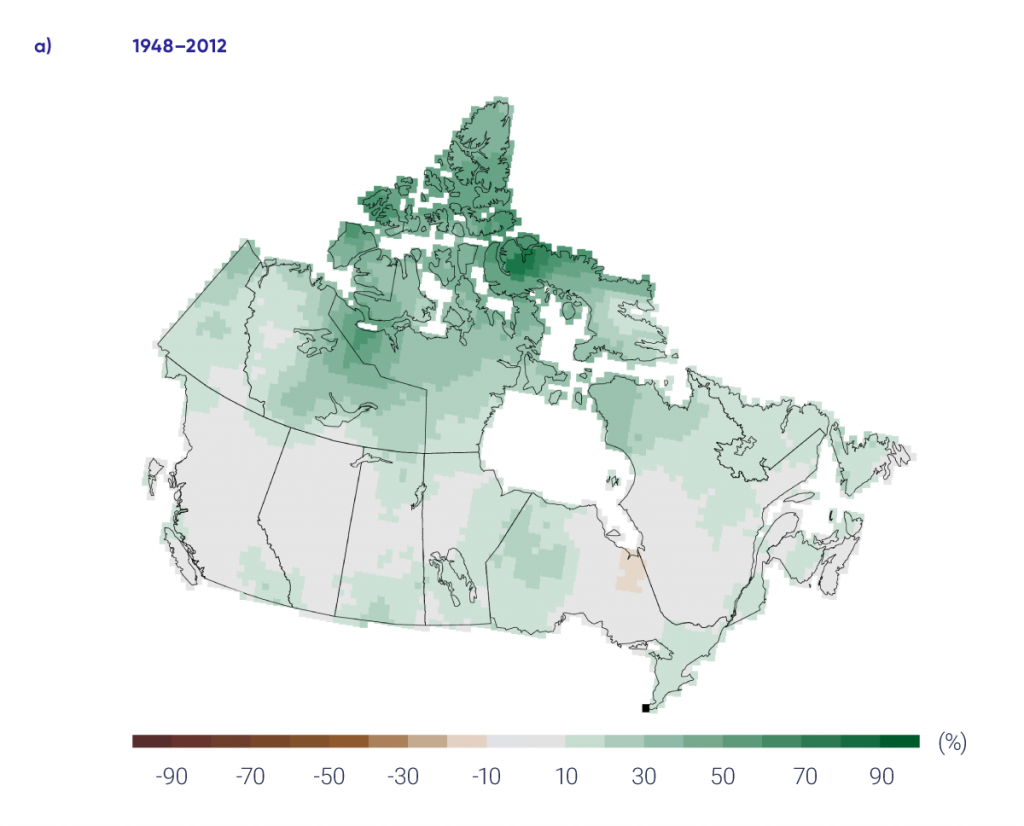

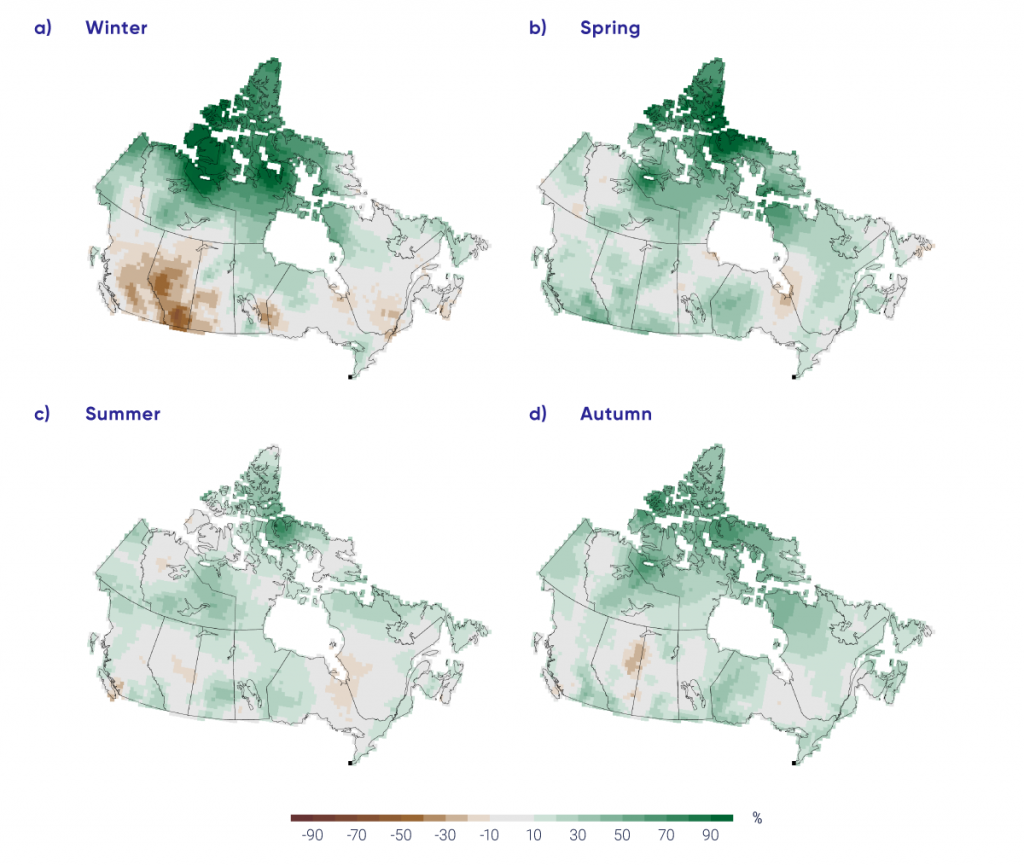
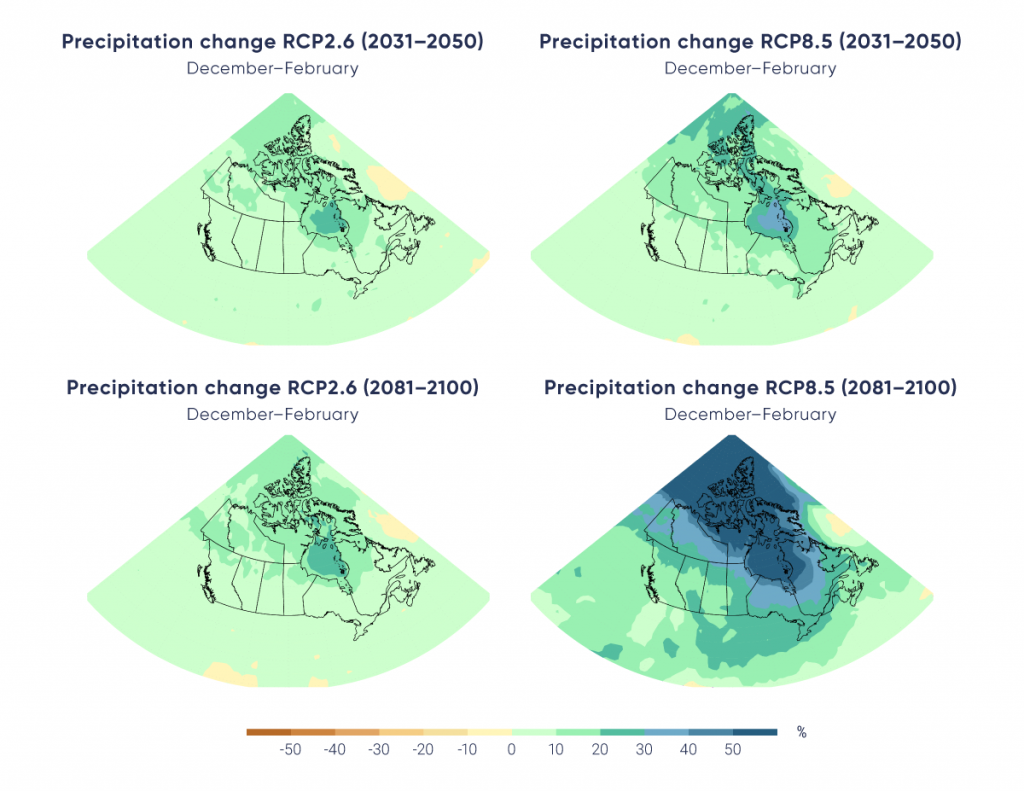
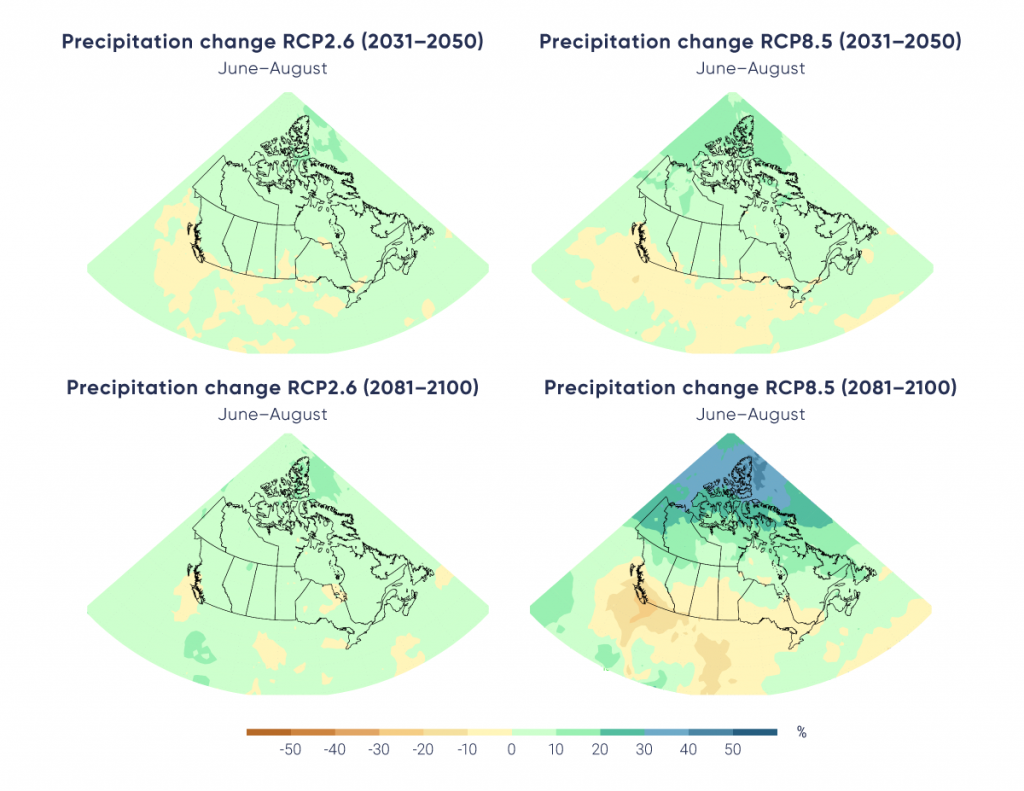
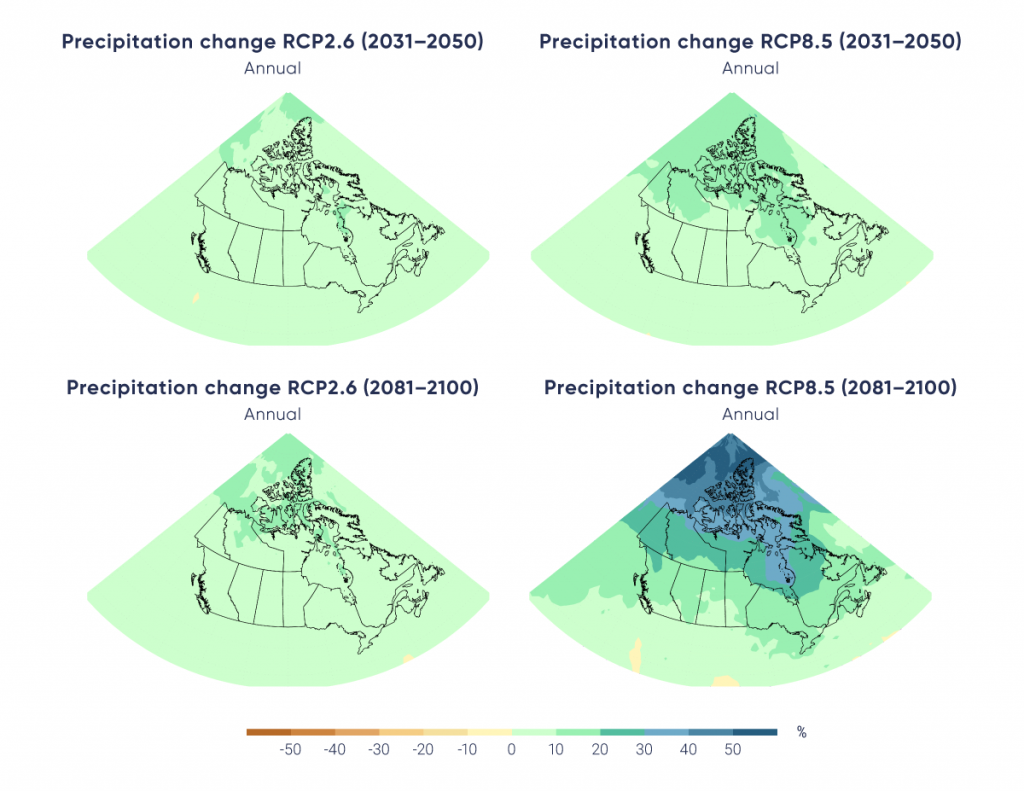
![This figure has two panels, each showing coloured symbols and lines indicating recurrence time (in years) as a function of time (from 2000 to 2100). The red symbols indicated 50-year events; the aqua symbols, 20-year events; and the blue symbols, 10-year events. In all cases, the symbols start at 50, 20, and 10 years (on the vertical scale), respectively, and decline over time into the future. In the upper panel (low emission scenario [RCP2.6]), the values decrease somewhat then stabilize after about 2025 and remain constant thereafter. In the lower panel (high emission scenario [RCP8.5]), the values decrease continuously over the 21st century.](https://dev.changingclimate.ca/site/assets/uploads/sites/2/2019/01/Figure-4.20-630x1024.png)
